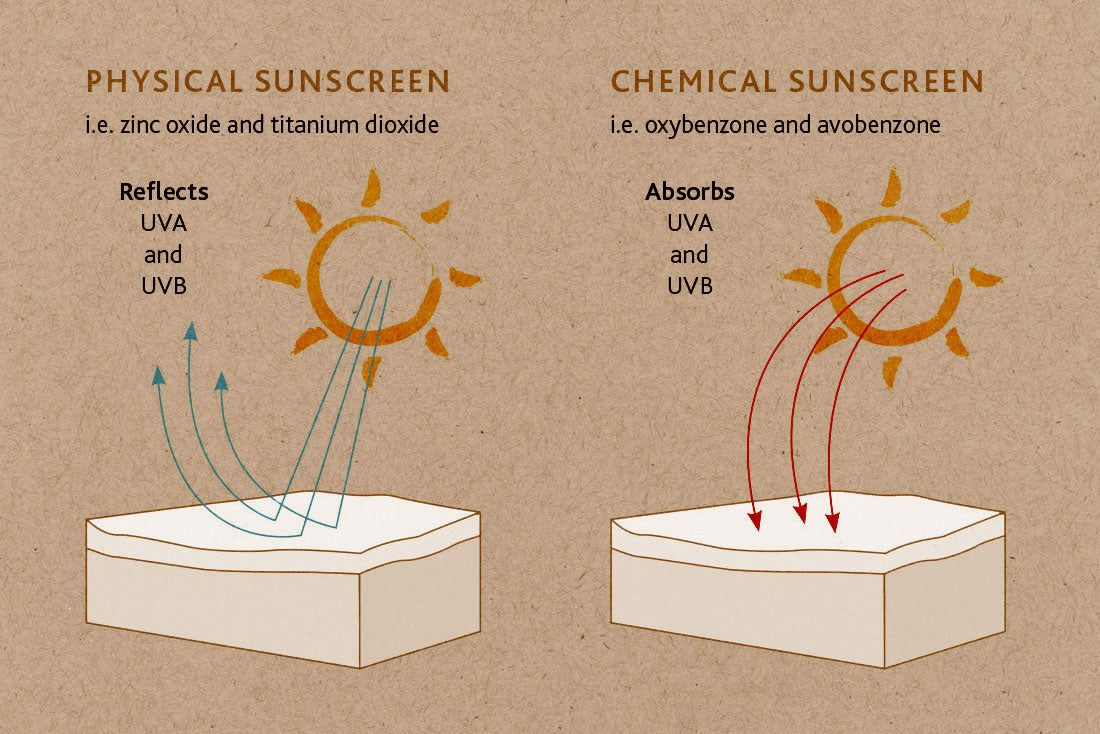Physical vs Chemical Sunscreens


There are two types of sunscreens: chemical and physical.
The most commonly used sunscreens are chemical. They contain compounds made in a laboratory and are typically clear, odorless and usually a bit runny. When applied, chemical sunscreens penetrate your skin, leaving no visual trace on your body and require about 20 minutes to fully sink and take action. They function by absorbing UV rays into your skin, like a sponge, and convert them into heat which is then retained by your body. Not that great sounding, right?
You’ll easily recognize (but maybe not be able to pronounce) these chemical ingredients with names like Avobenzone, Oxybenzone, Octinoxate, Octisalate, Octylcrylene, etc.
Physical sunscreens use natural active minerals from the earth, such as zinc oxide or titanium dioxide, that sit on top of the skin to literally block or deflect harmful UV rays from ever hitting your skin. Nothing is absorbed, converted or decomposed. You can easily notice physical sunscreens due to the residue left on your skin, whether they are white or colored with a pigment.
MANDA Organic Sun Paste is a physical sunscreen. However, something that makes our formula unique is the use of Thanaka powder as a main ingredient to block the sun. Thanaka is an ancient natural resource that has been utilized by indigenous cultures for centuries all over the world. By choosing a regenerative source such as Thanaka, we reduce our dependency on other elements such as zinc oxide, that cause a harmful environmental impacts, as they must be mined from the earth.
MANDA is comprised of eight, all natural, non-toxic, organic ingredients, this mineral sunscreen is uniquely formulated to perform. Exceptionally waterproof/sweatproof and made to last, MANDA Organic Sun Paste functions as a protective shield to block out UV rays while simultaneously fostering your skin’s optimum wellness.


